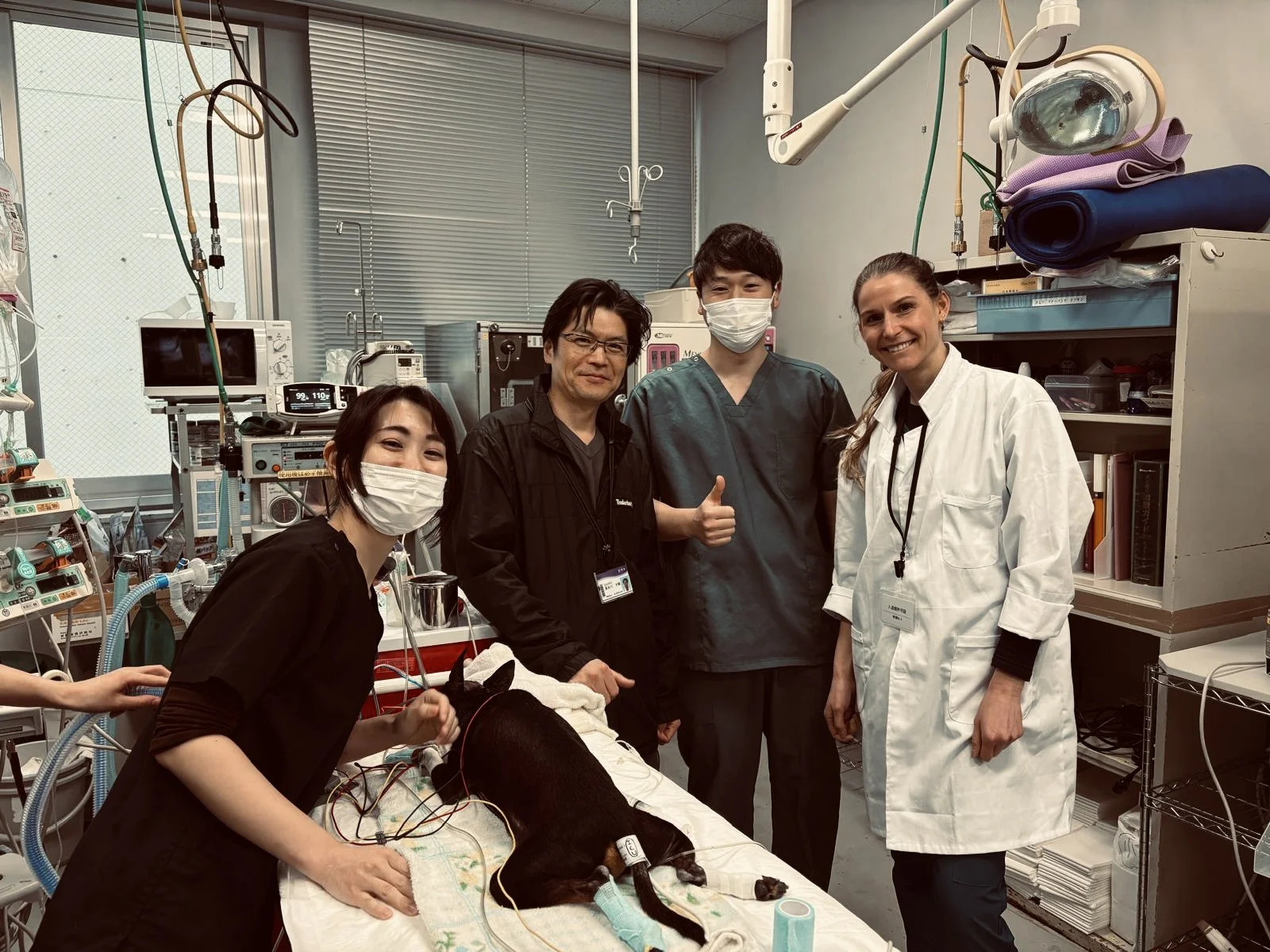Seizure Clinic Goes International
I love veterinary medicine, and I love travelling, and when have the opportunity to combine the two, I’m completely in my element. Although my job as a veterinary neurologist, and exploring different cultures, are two completely different things, they do share some similarities. For both, you need to have an open mind, have your communication skills polished, and find a little bit of guts to jump into the unknown.
The reason for my current trip came forth from the frustration of the limited treatment options I was able to offer caregivers of pets with epilepsy. Hope is something rather unique to us humans and one of the main driving forces of our existence. Although there is lots to say about the human population, it is always something I’ve admired. However seeing people lose hope, such as in refractory cases in which every medication adjustment does not seem to give any positive results, this is for me where I can really feel it in my heart. Luckily, there is increasingly more awareness of alternative treatment options for these cases and I’m positive we will continue to make advances soon.
Neurostimulation such as the vagal nerve stimulator, is performed in the South of the UK and could be a relatively low-invasive procedure. The other option is epilepsy surgery. Epilepsy surgery is a well-established treatment option in people and almost every human with drug-resistant epilepsy will go through a pre-surgical evaluation process at some stage. During this process, specialists investigate whether they can identify where the seizure originates in the brain with a technique called ‘electroencephalography’ (EEG) which measures the brain waves. Routine EEG is non-invasive but to avoid artifacts, movement must be restricted to a minimum during in-hospital recording. As this is difficult to achieve in awake pets, we do give them a small sedation to achieve a drowsy to slightly sleepy stage. If we are lucky, we can identify the initial area from which the seizure propagates, and with surgery we can modulate the surface of this part of the brain to reduce the firing of impulses in this area. However, in many cases, this is not so clear, and we can consider a different type of surgery in which we prevent the propagation of the seizure throughout the brain by disrupting a connection between the left and right brain hemispheres called the ‘corpus callosum’. This is a specialised procedure that requires great concentration and a surgical microscope for precision. A leader in this surgery in pets is based in Tokyo, Japan and I had the privilege of visiting him and attending him in surgery. Dr. Daisuke Hasegawa is the first veterinary surgeon who created and mastered this technique and as in people, the results of his surgeries are promising. Not only has he been able to reduce the frequency of generalised seizures, but the surgery has also resulted in better energy levels and improved cognition. These two latter have historically not been used to measure seizure management success, but they are very relevant and have been getting increasingly more attention throughout recent years.
From left-to-right: Dr. Asada, Dr. Daisuke, Dr. Miura and Dr. Bongers
As a part of improving our care as veterinarians, we need to work together and share knowledge and experience. Given everyone’s busy schedule, this is not always feasible, and you often find yourself relieved when making it through the end of your day and having responded to all your urgent requests. Having the headspace to take on new projects and putting yourself out there to search for collaborations with new people and unfamiliar cultures, may sometimes feel daunting. When I emailed Daisuke to ask whether he would be happy to expand his knowledge, I had zero expectations and as he runs the entire neurology service by himself at Nippon University, I could imagine his work schedule may not have allowed this. However, not long after I received a very positive and warm email back and this hospitality has continued throughout my entire stay. Daisuke and his team have welcomed me and despite the cultural difference (embarrassingly my extent of the Japanese language still does not reach over 10 words!), they have involved me every day in their activities. I was extremely impressed by their expertise in the field of presurgical evaluation and epilepsy surgery; it was like stepping into a human hospital! Daisuke explained the surgery to me from A to Z and really took his time for me to understand and follow. Their work ethos and dedication to high-quality research were truly admirable.
‘’Epilepsy is my life’s work’’ – Dr. Daisuke Hasegawa
I really enjoyed our discussions and felt incredibly comfortable asking all my questions (also thanks to our mutual friend Google Translate). I feel this is what it is about, connecting with new people, sharing experiences, and leaving inspired and ready to make new steps in the veterinary world. Life is busy, can often feel stressful and we are always short on time. Of course, I’d like to be able to do this surgery, become highly skilled in it, and give my clients promising outcomes. But it’s also about the connections that we make along this journey, which allows for support, feedback, encouragement, and validation, which helps the professional move towards better outcomes.
I am extremely grateful for having had the chance to visit Japan, enjoy its culture, and for the knowledge I’ve obtained at Nippon University. Hopefully, Daisuke and his team can publish his work soon and I can’t wait to read it!
